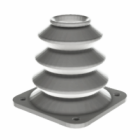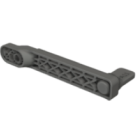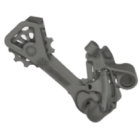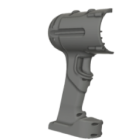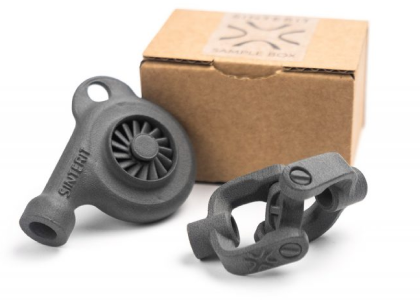Is 3D printer dangerous? Understanding the real risks
Like any manufacturing process, 3D printing comes with its share of risks. The question “is 3D printing dangerous?” is valid — and deserves an informed, balanced answer.
The truth is, 3D printing is not inherently dangerous, but it does involve heat, motion, electricity, and — in some technologies — fine powders or chemical resins. If you understand the risks and follow proper procedures, 3D printing can be used safely in both professional and desktop environments.
This chapter outlines the most important hazards associated with different 3D printing technologies and what to do to mitigate them.
Thermal risks: are 3D printers dangerous due to heat?
Most 3D printers — especially FDM and SLS systems — use high temperatures to melt or fuse material.
- FDM printers operate at nozzle temperatures up to 260°C and heated beds at 100°C or more.
- SLS machines use lasers and maintain a chamber temperature around 170–200°C for materials like PA12.
Risk:
- Burns during maintenance, nozzle cleaning, or when reaching into the build chamber too early.
Mitigation:
- Never touch heated elements until they’ve cooled completely.
- Use insulated gloves and tools when servicing.
- For SLS, wait for post-cooling before unpacking (see post-processing guide).
Respiratory risks in 3D printing: fumes and particles
Another important safety aspect is air quality. Some materials release ultrafine particles (UFPs) or volatile organic compounds (VOCs) when heated.
- FDM printing with ABS, for example, can emit styrene.
- SLA resins contain photoinitiators and monomers that may vaporize or aerosolize.
- SLS powders, though not vaporized, can become airborne during handling.
Risk:
- Inhalation of particles or fumes can irritate the lungs or cause long-term health issues with chronic exposure.
Mitigation:
- Always operate printers in well-ventilated spaces.
- Use enclosures with filtration (HEPA + activated carbon).
- For SLS: handle powder with masks (FFP2/FFP3) and use a dedicated unpacking station.
Is 3D printing dangerous due to chemical exposure?
In resin and powder-based printing (SLA, DLP, SLS), contact with materials in raw or partially cured form can cause skin irritation or allergic reactions.
Risk:
- Direct contact with uncured resin or raw powder can result in dermatitis.
- Spills can create slip hazards or contaminate equipment.
Mitigation:
- Always wear nitrile gloves, safety glasses, and lab coats when handling uncured resin or powder.
- Follow manufacturers’ material safety data sheets (MSDS) for storage and disposal.
- Clean spills immediately and dispose of contaminated waste correctly.
Mechanical and electrical safety in 3D printers
3D printers are electromechanical systems — with motors, belts, fans, and moving print heads.
Risk:
- Pinching or entanglement in moving parts.
- Electrical shock or short circuit due to improper wiring or maintenance.
Mitigation:
- Never reach into the printer while it’s operating.
- Disconnect power before servicing.
- Ensure grounding and electrical installation complies with local standards.
- Use certified equipment — especially with high-power industrial machines.
Can 3D printers catch fire? What to know about fire risk
While rare, there have been cases of fires caused by 3D printers — usually due to faulty power supplies, thermal runaway, or improper modifications.
Mitigation:
- Use printers with thermal protection and firmware safety checks.
- Avoid leaving printers running unattended for long periods — especially in home or office settings.
Use non-combustible surfaces and install a smoke detector near the printer.
SLS-specific risks: is powder-based 3D printing safe?
Because SLS involves fine powder, dust management is critical. While PA12 is not explosive under normal handling, fine organic powders can present a combustion risk in certain environments.
Mitigation:
- Avoid creating dust clouds — use controlled unpacking and sieving systems.
- Ground all metal equipment to reduce static buildup.
- Do not vacuum with a regular shop vac — only use ATEX-certified vacuum cleaners.
Final answer: is 3D printing dangerous or safe to use?
3D printing is safe when used responsibly — but yes, like any advanced tool, it can be dangerous when misused or misunderstood. The good news is that the risks are well-documented, preventable, and manageable with basic training and common sense.
Understanding the materials you’re using, respecting machine specifications, and implementing proper ventilation and protective measures are the best ways to ensure a safe, productive 3D printing environment.
Explore also
- What is print 3D? Concept of 3D printing
- What does “3D printed” mean?
- Example of 3D printing
- How does 3D printing work?
- Slicing in 3D printing
- What do you need for 3D printing?
- 3D printing benefits
- 3D printing issues
- 3D printing history
- 3D printing facts
- Who uses 3D printers? Not just for engineers anymore
- Where 3D printing is used
- 7 common 3D printing myths
Related categories




